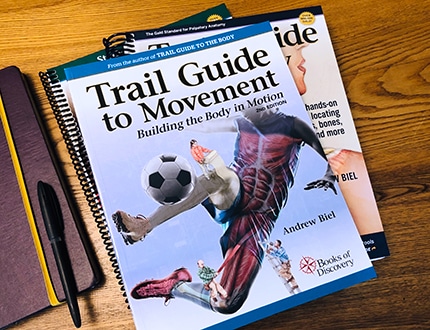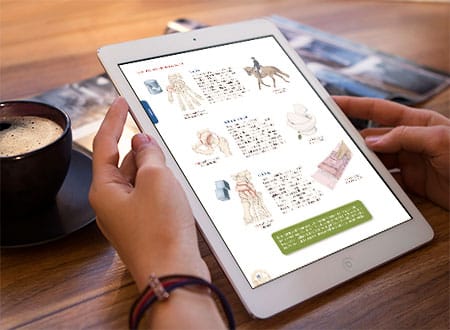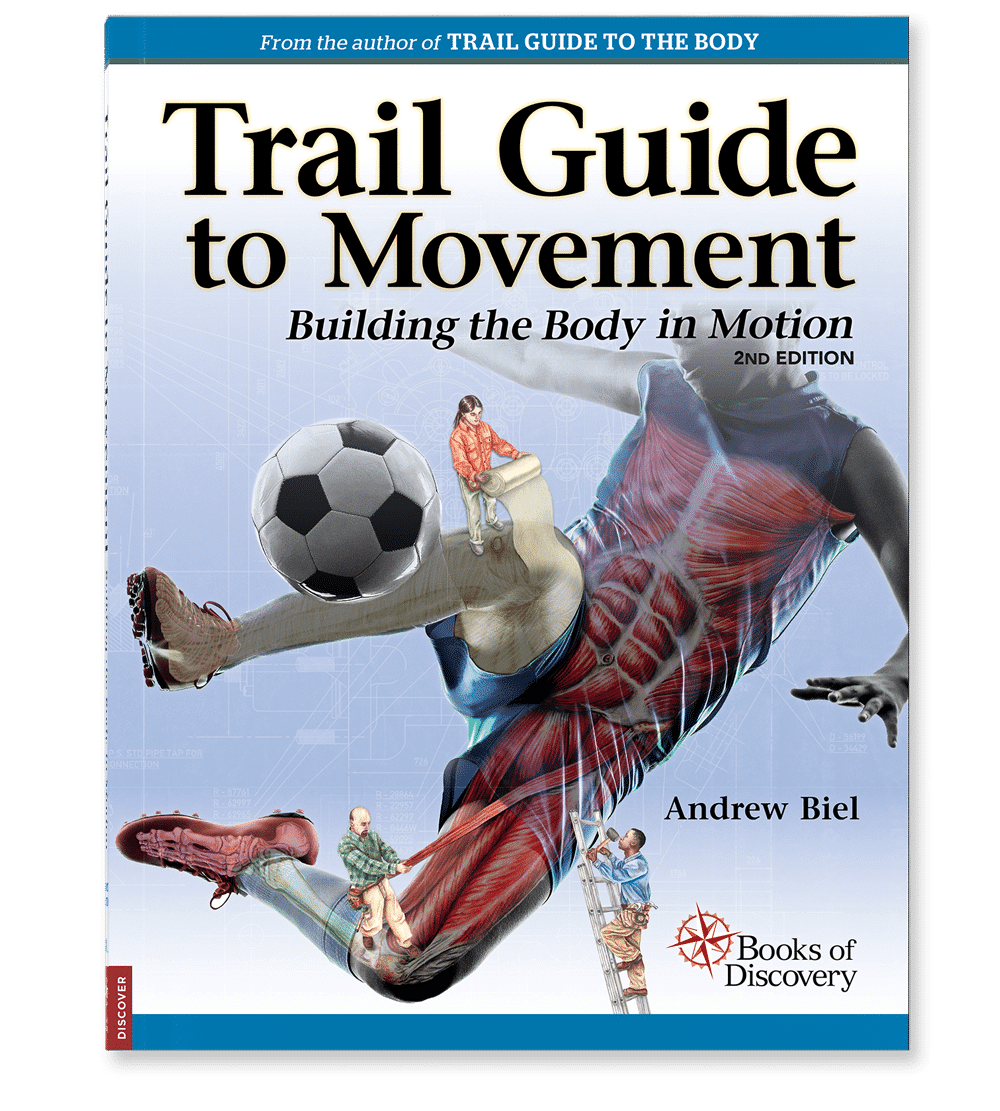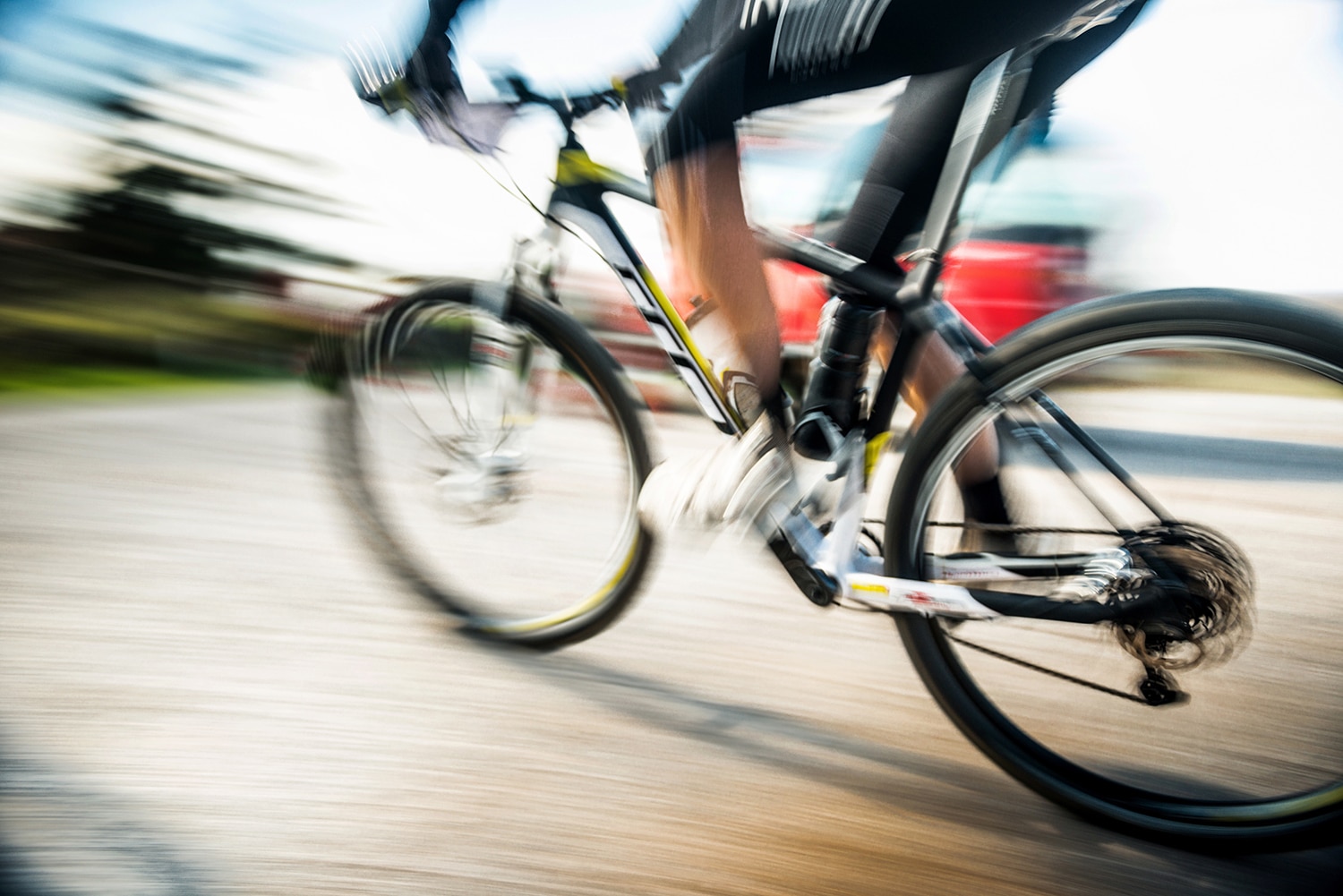I really love Trail Guide to Movement and the students have found it very helpful as well. The textbook really helps the students understand concepts at a more concrete level, which I very much appreciate.”
Takes readers on a fascinating
journey into the world
of human movement.
Creates a unique teaching approach.
Trail Guide to Movement takes the kinesiology principles found in Trail Guide to the Body even further by deepening students’ understanding of how muscles, bones, fascia, joints, and other structures come together to produce human movement. It explores biomechanics, key structures for movement, and principles of posture and gait, all with memorable imagery and straightforward descriptions.
This award-winning textbook is written with the same encouraging voice and subtle humor as the iconic Trail Guide to the Body, making the study of human movement easy to understand, captivating, and relatable.

Keeps your students engaged and inspired.
Winner of a gold medal in the PubWest Book Design Awards, Trail Guide to Movement is written with the same easy-to-understand, encouraging voice and subtle humor as Trail Guide to the Body, the acclaimed textbook for teaching palpatory anatomy. Author Andrew Biel once again takes students on an engaging and inspiring journey through the human body, with his unique kinesiology textbooks.

Sets you up for success with complimentary instructor tools.
As a Trail Guide to Movement instructor, you’ll gain easy access to an extensive collection of complimentary instructor resources for every lesson. From PowerPoint presentations and a vast image library to our detailed lesson plans, these resources will save you time and capture students’ attention like never before.

Expands learning beyond the classroom with an eBook version.
The Trail Guide to Movement eBook offers on-the-go learning wherever and whenever students roam. They can bookmark their favorite pages, enlarge images, highlight key information, make notes, and search for terms and definitions — features that make studying much more convenient and engaging.

Newly revised!
Trail Guide to Movement, 2nd Edition
Considered one of the most captivating kinesiology textbooks, with true-to-life illustrations and clear, easy-to-understand descriptions, this revised edition of the award-winning textbook features visually dynamic explorations of the human body in motion:
- Chapter introductions with pre-learning features—client scenarios, hypothetical questions, and chapter objectives—improve comprehension and enhance retention.
- End-of-chapter review questions help students test their knowledge.
- Added topics cover even more kinesiology essentials:
– forces (traction, compression, shearing, bending and torsional forces).
– force in depth (linear, parallel, and congruent force).
– levers (expanded description, new images, and leverage lab).
– stability, equilibrium, and factors of equilibrium.

“The way in which Trail Guide to Movement's information is presented is fantastic for helping students really get a grasp on the structure and function of different tissues. The text explains seemingly abstract concepts in a way that is visual, relatable, and easy to understand. It paints a picture of the body piece by piece through storytelling (of the most factual kind)." ”
